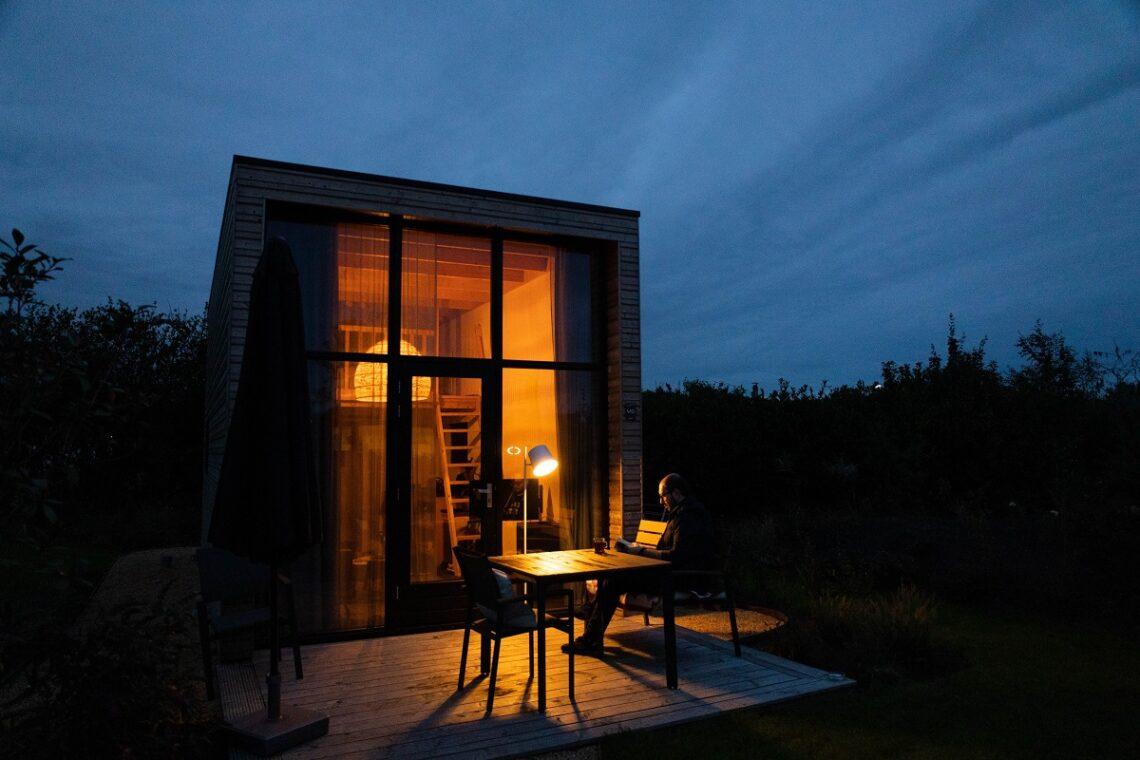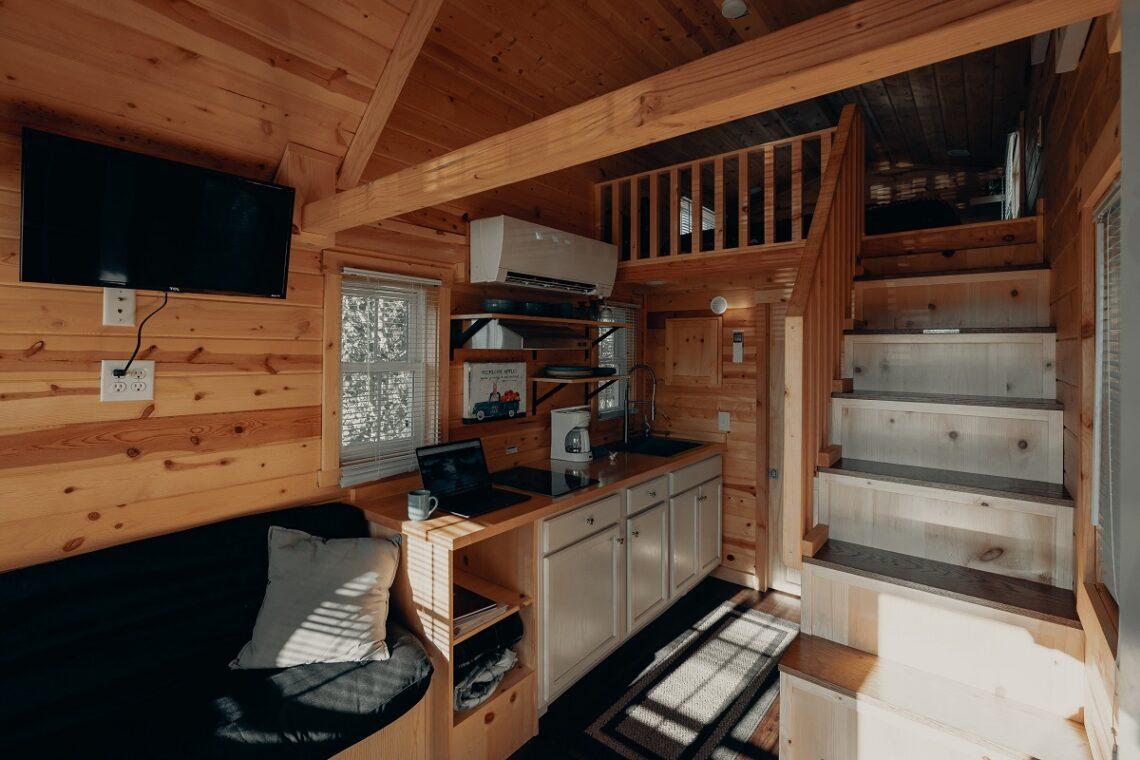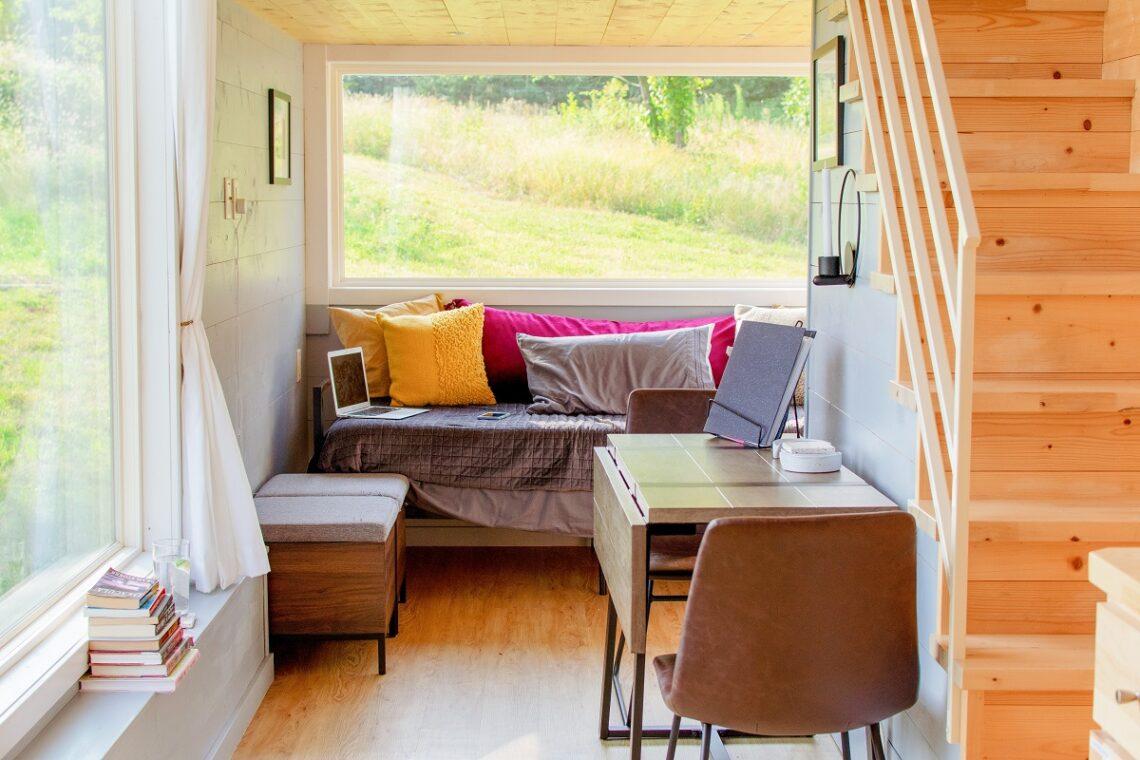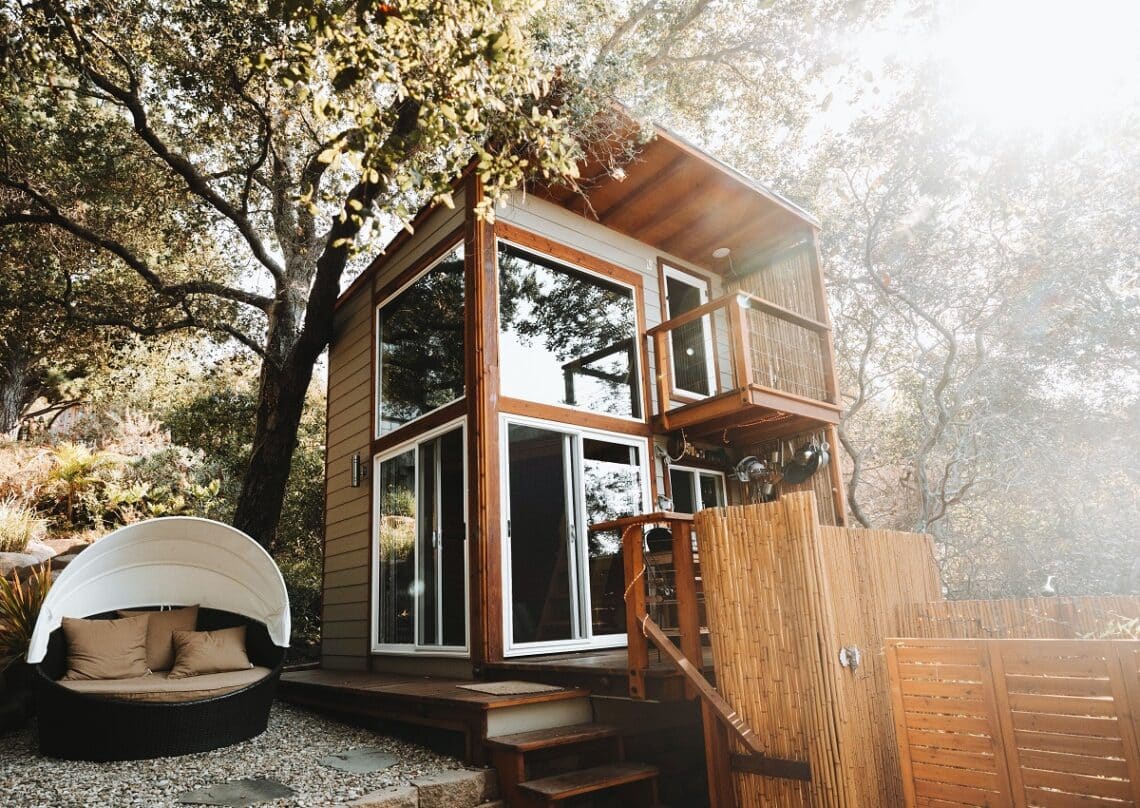Imagine waking up in a smartly designed home with a high glass ceiling, natural light in plenty, and perfect ventilation, all within 500 sq. ft.!
If this seems like a dream come true, you’re surely intrigued by the concept of tiny houses and often wonder why they’re so popular in the USA. You might be aware that it involves downsizing the living space and embracing a minimalist philosophy.
But that’s just a drop in the ocean if you want to understand what made tiny houses as popular as they are right now. Don’t worry; we’re here to help you out through this extensive yet simplified guide today.
So, let’s get started!
Why Tiny Homes Have Become So Popular

Before we delve into the reasons behind the popularity of tiny houses, let’s discuss certain fundamentals of the concept of tiny living. This will help you clearly understand what tiny houses are all about.
What Are Tiny Homes?
At first thought, the term “tiny home” might sound self-explanatory, but these homes do have a specific definition. They can measure at most 550 sq ft in area, and you can build them either on wheels or a permanent foundation as per your needs.
Though there aren’t any rules when it comes to creating a tiny home, the popular term “tiny life” refers to living in houses that fall under the 550 sq ft level. It’s also worth noting that the average cost of building such houses ranges from $20,000 to $100,000 based on the materials and features you prefer to add to a home.
Furthermore, you can find a tiny home to rent or buy one as per your needs. It’s even feasible to build and design a tiny home by yourself, either from scratch or using a tiny house building kit.
They mostly have an independent structure — parked on land with either a larger home or some buildings. Apart from that, a few tiny houses have their own parking lot.
The concept of a tiny home is intriguing in itself. But you’ll marvel to hear that they can come in different sizes, forms, and shapes based on the owner’s preferences.
What’s The Tiny House Movement?
The trend of building tiny homes in America became increasingly popular in the past decade and soon came to be called a movement on its own!
Living in a tiny house wasn’t, of course, a new concept, but when the housing market experienced a downturn in 2008, the movement gained momentum. Americans felt the need to downsize their property, with many taking a step ahead to choose portable tiny homes.
Interestingly, a man named Jay Shafer built a tiny house on wheels in 2012, which he marketed later on. And since then, this architectural and social movement is going strong till today, as more people are opting to travel without incurring more debt.
Why Have Tiny Homes Become So Popular?
Now, let’s take a close look at the factors that contributed to making tiny homes increasingly popular in the current housing scenario.
1. Financial Advantages
Did you know most Americans end up spending ⅓ to ½ of their income on building a roof over their heads? Yes, that’s right!
Thanks to this trend, people have got into thinking about how they can afford to build a home of their own. Do note that the cost of building a typical home will include interest, insurance, taxes, repairs, and improvement, apart from its purchase price.
Such high costs and other related expenses have led 76% of people in the country to face hardships in managing their home expenditures. In short, most Americans are overwhelmed by all their obligations and are tired of this rat race.
Tiny houses present a great alternative to such an alarming cost of living — if you live smaller, you can cut on a lot of spending. To date, many people have narrated how their monthly costs reduced massively after moving from an apartment to a tiny house.
As we already mentioned, current market trends show that building tiny houses can cost anywhere between $20,000 to $100,000, while their upkeep costs are relatively lower. Based on where you’re parking the tiny house, you might have to bear rental or land insurance costs. But the long-term savings on a tiny house can be huge.
In fact, you can recoup the cost of building the home within a few years, which will leave you with a great deal of savings. That’s how the tiny way of life has helped many people escape from the recurring cycle of debt.
2. Lower Use Of Energy
Energy use is a major aspect of living on any property, and tiny houses are ahead of traditional ones in this criteria as well. Their smaller size considerably reduces the costs of electricity, waste removal, fuel, and water usage.
A specific area where homeowners see a marked difference is the cooling and heating costs — traditional HVAC machines are much larger and more powerful. In comparison, tiny houses work well with compact AC units or energy-efficient split systems.
Some owners have even gone the extra mile by installing solar panels for their tiny homes. You can mount these panels directly on the roof or on stands near the house. Plus, the panels collect solar energy during the daytime, which homeowners use to efficiently power their appliances and handle waste removal.
Do note that lower energy use also results in lesser environmental impact, another factor that has appealed to many homeowners.
3. The Joy Of Leading A “Tiny Life”
While the overwhelming cost of living in typical homes has fueled the tiny home movement, people have also felt inspired by its innovative aspects.
Search tiny homes on Google or YouTube, and you’ll come across interesting content put forth by lots of owners who’ve shared their experiences and life journeys. Each has an intriguing story to tell through their blogs and videos, which comprise different adventures they experienced since moving in and how they go about their daily lives.
Also, these people find the clutter-free life of tiny houses more fulfilling and valuable. Everyone will agree that traditional homes can often be cluttered with books, clothes, decorative items, and furniture, which can be stressful to manage.
However, when it’s a tiny home, you’ll have a small space and will need to choose the items to keep while moving in. You’ll find it easier to be organized and handle your personal belongings efficiently when there are fewer items to take care of.
Moreover, tiny homes offer greater financial freedom, have a smaller environmental impact, and ultimately help lead a self-sufficient life.
4. Freedom To Travel
Remember when we mentioned how tiny homes let people travel cost-effectively? Picking up from there, another factor behind their growing popularity is the ease of movement they offer. The small size of tiny mobile homes lets the owners explore different destinations by moving the home to a place they like.
You can transport a tiny home via a trailer and rent land for a couple of months to park it. That way, you’ll be able to get a taste of living in different locations, all from the comfort of the same home!
Tiny homes often get compared to RVs due to such features but know that the two are similar mainly in their aesthetic appearance. But know that a tiny home is heavier than an RV and isn’t supposed to be transported as frequently.
Another point worth noting is that an RV is taken to be a vehicle, and its value declines with time, while a tiny home is regarded as a permanent structure. That’s not all; tiny homes also last longer and have a better resale value.
5. Ease Of Maintenance
Hands down, maintaining a tiny home is much easier than a traditional home. You’ll have lesser appliances, minimal external maintenance, and more manageable space.
For instance, consider how frequently typical homes require cleaning— the windows, roofs, porches, and siding become grimy and require at least a few scrubs every year. Tiny houses still need cleaning, but as they aren’t very large, it’ll be much less work.
Thus, homeowners get more spare time to do what they love, which is especially valuable for people who travel frequently. Finding time to explore Niagara Falls or Monument Valley won’t be a problem when you can clean the roof in a jiffy!
For tiny homes, another major lookout is trailer maintenance. Owners need to conduct routine checks on the tire pressure, bearings, and hitches to ensure the trailer stays safe for travel. Remember that if you can’t maintain the trailer regularly, moving a tiny home can be unsafe and challenging.
6. Tiny Homes On TV And YouTube
As design and housing companies are striving to make a name for themselves in the movement, the television industry has adapted to the tiny house trend pretty quickly. They’ve brought forth a number of fun-filled and informative programs, including:
-
- Tiny House Living
- Tiny House Nation
- Tiny House World
- Tiny House Hunters
These shows promote the adventurous and enthralling lifestyles of tiny homeowners in the US and beyond. You get to watch the trendy interiors and sleek designs of many tiny homes built for individuals and couples.
Aired on some of the most-watched networks like HGTV and FYI, these shows depict how users can transform a simply-designed, small house into a captivating living space. The visual power of television lends a face to the movement and makes more people aware of the appearance and functioning of tiny homes.
Let’s take HGTV’s show Tiny House, Big Living as an example. It not only depicts magnificently constructed portable, tiny homes but gives viewers valuable insights into living a comfortable and modern life in these tiny quarters.
The show’s fresh tiny house designs provide viewers with ideas on constructing different architectural elements according to their needs. Other shows such as Tiny House World promote the growing trend of building tiny houses worldwide while also showcasing mesmerizing designs.
Not only that, but tiny home content also has a big presence on YouTube. Channels such as Living Big In A Tiny House, Tiny Home Tours, and Tiny House Giant Journey are promoting the popularity of tiny houses.
Here’s another interesting aspect to watch out for — these programs often seek to expand the definition of tiny living space. In one of them, there was an episode where builders turned a school bus no longer in use into a modern living space with a bedroom and kitchen.
All in all, television shows help spread the concept of tiny houses by putting forth a positive image of the tiny house lifestyle and its benefits.
Things To Consider While Getting A Tiny Home
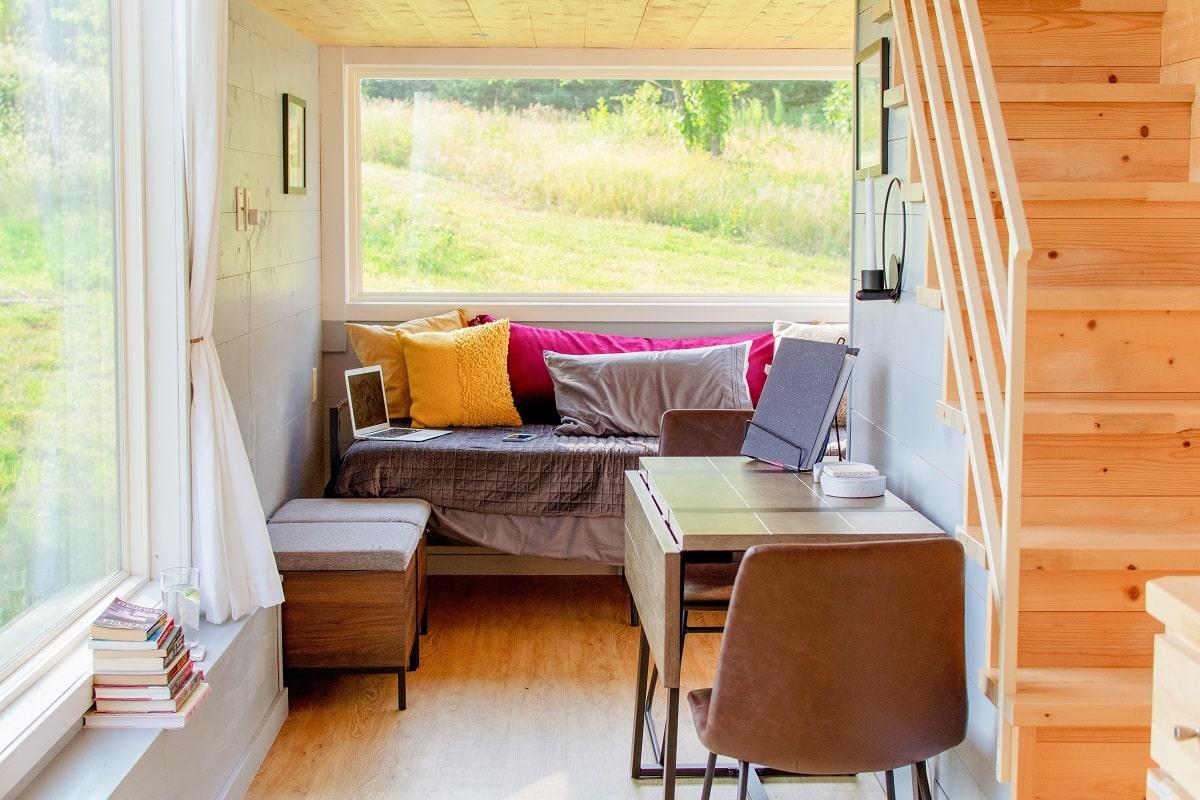
1. Time It Well
Timing is key when you’re taking any major decision in life, and moving into a tiny house is no different. But deciding when to make the purchase isn’t as simple as it seems.
Here are three vital factors to keep in mind in this regard:
2. Weather And Seasons
No matter whether you’re building or buying the house, plan the move based on the climate in your region. The job is naturally difficult to complete during the snowy season, so it’s best to plan the purchase or construction during the spring-fall season.
3. Major Changes In Life
If you’re considering a major lifestyle change, incorporate that into your plan to ensure the transition is smooth. While the tiny home needs to work for you, it’s equally important to be able to work within the home.
4. Buying vs Building A Tiny House
For those of you looking to buy a house, proper research will ensure you get the right price. Buying a tiny home costs anywhere between $15,000 to $40,000. Here are some factors that determine their value:
-
- Size
- Rooms
- Yard
- Water supply
- Upgrades
- Location
However, if you have a larger family and need specific measurements, it’s best to build the tiny house independently. Adapting to a preset surroundings isn’t difficult, but if you’re able to make your own rules, what’s better than that?
5. The Zoning Permits
It can be tricky to abide by the zoning instructions for some geographic areas with regard to getting a tiny house. At the same time, it’s essential to ensure they don’t hinder your tiny home living. Make sure to consider these points if you wish to keep the tiny house legal:
-
- Type
- Location
- Whether the home is on a trailer
- Living in the home part-time
Why Tiny Homes Have Become So Popular Frequently Asked Questions ?
How can you get a loan to buy or build a tiny house?
The Tiny House Network suggests that you can get a loan for your tiny home by any of the following methods:
-
- Bank loan
- Traditional mortgage
- Credit union
- RV loan
- Your builder
- Peer-to-peer or private lending
Are there any indirect costs of owning tiny houses?
Other than the direct costs of buying the house, like procuring the trailer, finishes, and materials, you’ll have to consider certain indirect costs too. A primary part is the cost of moving in, no matter whether you plan to hire a company or move yourself. Apart from that, your indirect costs include fuel and storage costs for towing the house.
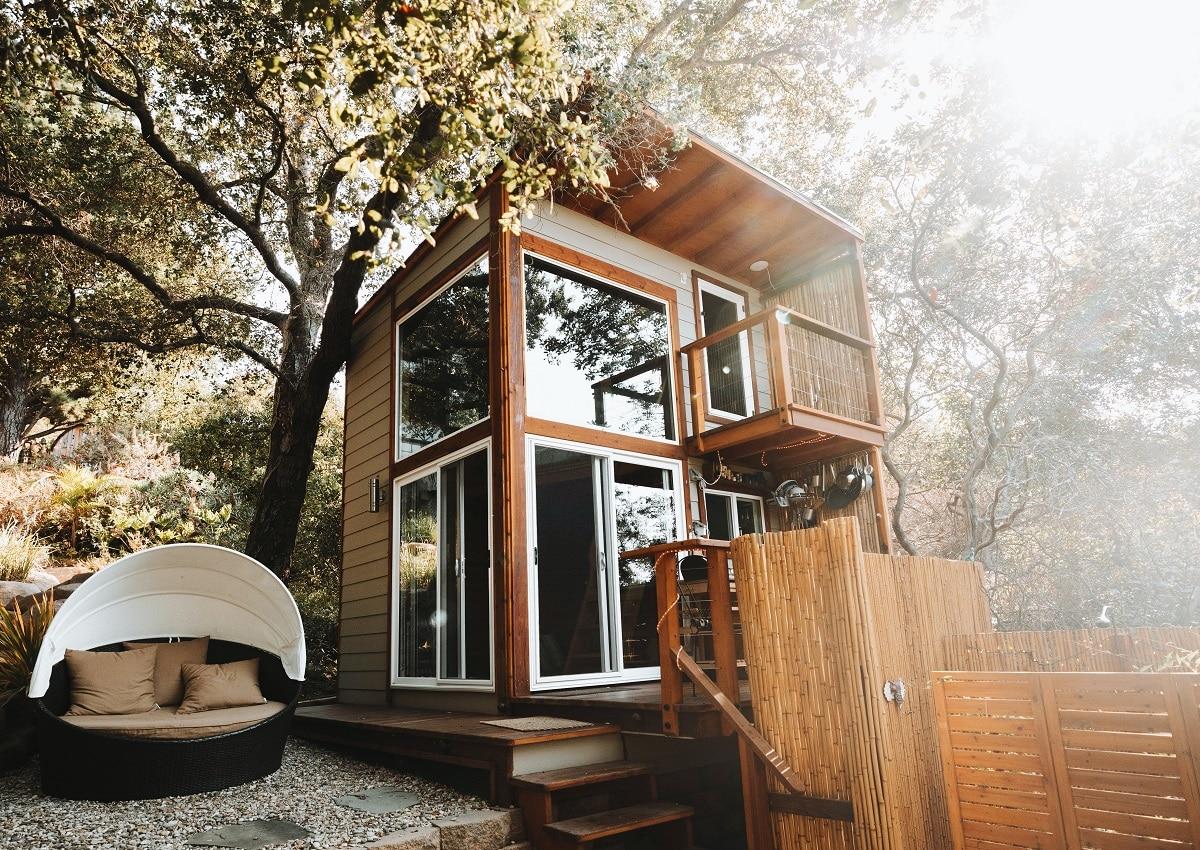
Why Tiny Homes Have Become So Popular Final Words
That was our take on what has made tiny homes a prominent part of the housing scenario in the USA.
Now, what do you think about moving into a tiny home of your own? We’ve also shared our thoughts on what that entails, so, hopefully, you’ll be able to decide that too.
If you’re looking for a more adventurous yet cost-effective way of life, we’d suggest giving it a serious thought and talking to a tiny homeowner for a first-hand experience. It could be a friend who owns one, or you could even connect with an online tiny house community. That way, you’ll be able to plan better on how to proceed.
See you next time!
Related Articles
Architect Designed Homes vs Project Homes



